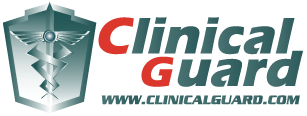Basic Knowledge about Nebulizers
Nebulizers are used to treat asthma, COPD, and other respiratory conditions needing certain inhaled medications. There are a few types of nebulizers available on the market. However, the two most common nebulizers are compressor nebulizers and ultrasonic nebulizers. Compressor or pneumatic with jet nebulizers are typically heavy tabletop devices attached to tub/jet nebulizer, and/or mask for inhalation. Ultrasonic nebulizers are usually much smaller handheld devices that can be used directly with the mouthpiece or with a connecting mask. Ultrasonic nebulizers are perfect for people on the go or who may need to use it discreetly and quietly in places such as work or school. Medical research has shown that ultrasonic nebulizers perform more effectively and faster in depositing medication into the lungs. Depending on which models are being compared, ultrasonic nebulizers can deposit around double the amount of medication into the lungs as opposed to certain compressor nebulizers. In addition, do not be alarmed if treatment with an ultrasonic nebulizer ends 5-10 minutes earlier than your normal compressor nebulizer treatments. Ultrasonic nebulizers provide effective and faster treatment.
Steps To Effectiveness
Following simple steps while using a nebulizer can improve the effectiveness of the treatment and increase the longevity of the nebulizer. By always reading the instruction manual before use and before cleaning it, the beneficiary has taken the first necessary step into effectively taking the treatment and properly using the nebulizer. Depending on the nebulizer, treatments can be most effective while taking slow, calm inhales or while breathing normally. Usually sitting during treatment is best for the beneficiary and the nebulizer; it allows the beneficiary to breathe normally and the nebulizer to stand upright and not titled. Lying down and sleeping during treatment might be easier for some children and is still effective as long as movements are not affecting the nebulizer. In cases where children have to sleep to take their treatment, heavier compressors might be more suitable since most of those models have a sturdier base and will not be affected by movement during sleep.
Important Factors
The most important factor to having a long lasting, and clean nebulizer is cleaning it after each and every use, and even sometimes before use. Without regular cleaning, contaminated nebulizers can cause infection or re-infection to the beneficiary’s lungs. Typically a mild dish washing soap and warm or hot water may affectively clean the removable parts of a nebulizer and air drying is best to prevent any contamination after washing it. However, each manufacturer has their protocols for cleaning the nebulizer so always read the instruction manual before cleaning it and before use.
References:
[1] European Respiratory Journal, http://erj.ersjournals.com/cgi/content/abstract/10/4/905
[2] Microbiologic contamination study of nebulizers after aerosol therapy in patients with cystic fibrosis, http://pt.wkhealth.com/pt/re/ajic/abstract.00000545-200010000-00004.htm;jsessionid=LkzSm6Qrdq9pLMSJ8GrQ0XJyGZkvc2BHTKtTZBXDkg4knT8kJ5Dq!2129441969!181195629!8091!-1
[3] Nebulizer Cleaning and Disinfecting, http://www.rxstat.net/nebulizer_cleaning.html
Disclaimer:
The information on this website aims to provide customers with relevant knowledge regarding our products. Under no circumstances should the information be used for therapeutic purposes. Customers must consult their doctors for the correct use of these information and products. ClinicalGuard.com is not responsible for any losses or accidents caused by the use of information on this website.

